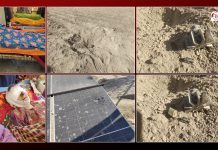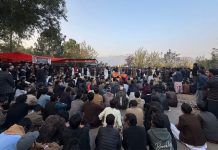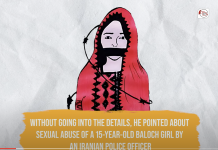Monsoon rains continue to cause devastation in Balochistan, prompting the authorities to declare a state of emergency in nearly a dozen districts. The northern, central, and eastern parts of Balochistan have been hit hardest, with constant downpour leading to widespread flooding and an escalating humanitarian crisis.
Ziarat, Qila Saifullah, Harnai, Qila Abdullah, Kharan, Panjgur, Pishin, and Zhob stand among the hardest-hit districts now in a state of emergency.
The devastating impact of the flooding is evident in Pishin district, where a fatality was reported recently. Furthermore, the floodwater has submerged several villages, leading to widespread displacement.
In the districts of Panjgur and Kharan, conditions continue to deteriorate. Rain-soaked towns and villages are battling floodwaters, with the western part of Kharan district facing severe destruction. All dams are filled to capacity in both the districts, with spillways flooded.
The heavy downpours have not only disrupted daily life but have also severed critical infrastructures in Balochistan. Key road links between Balochistan and Sindh have been severed, and major highways blocked. Furthermore, the routes linking Harnai to Sanjawi, Gandhawa to Notal, Sibi to Kohlu, as well as the Pinjra Bridge road in Bolan, have also been blocked due to flooding.
In response to this unfolding crisis, Chief Minister Abdul Qudoos Bizenjo has released Rs150 million for immediate relief operations. However, the extent of the crisis is testing the limits of these relief efforts.
As the Meteorological Department forecasts further heavy rainfall and thunderstorms in the region, the threat of additional flooding and landslides looms large. With dozens of villages already submerged and many residents awaiting rescue, the crisis in Balochistan underscores the urgent need for extensive relief operations and immediate action.





























